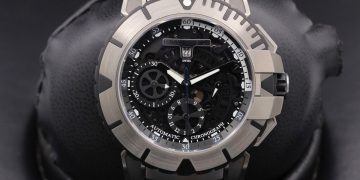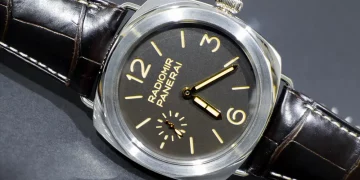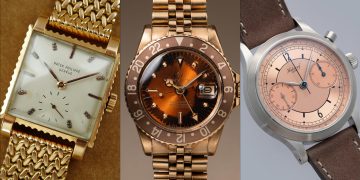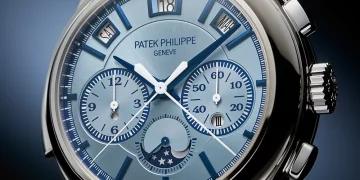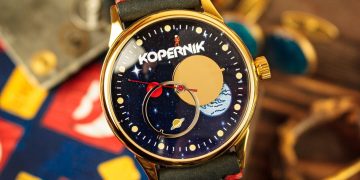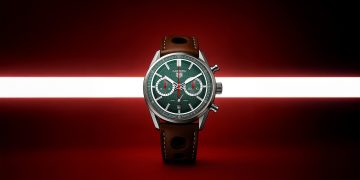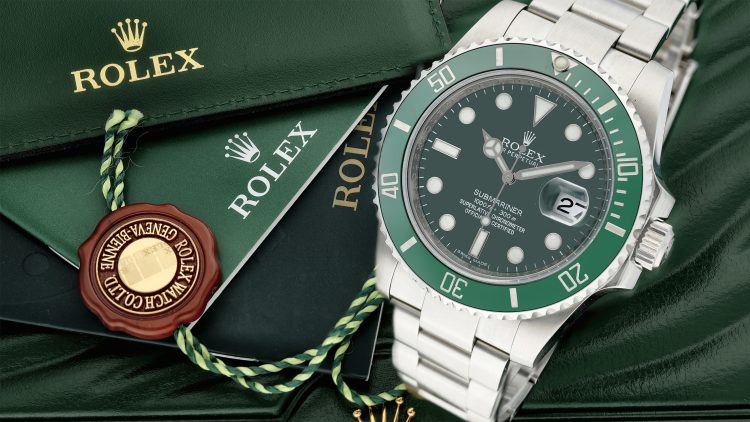Watches are more than just timekeepers; they are symbols of success, craftsmanship, and style. The Rolex brand, in particular, has been a beacon of luxury and sophistication for decades, with its iconic models becoming coveted treasures. However, in the world of horology, the pursuit of owning a genuine Rolex can often lead to an obsession with authenticity. What happens when a fake version of the famous watch proves to be the unlikely hero in a life-or-death situation?
In this story, we delve into an extraordinary real-life incident in which a counterfeit Rolex played a pivotal role in saving a man’s life. The fascinating intersection between authenticity and perception in the world of luxury watches is explored, offering insight into the cultural significance of watches and the psychological power they hold over individuals. Through this dramatic tale, we will also challenge the notion that authenticity always equates to value and uncover the often-overlooked role of counterfeits in contemporary culture.
The Unlikely Hero: A Fake Rolex
It was an ordinary Thursday morning when Daniel Thompson, a 45-year-old businessman, found himself in a life-threatening situation. Thompson was in the midst of an intense hiking trip with a few friends in the remote mountains of Wyoming. The group had been trekking for several hours, enjoying the fresh air and rugged terrain, when disaster struck. While navigating a narrow cliffside trail, Thompson lost his footing and fell several feet down the rocky slope. As he tumbled, he struck his head against a sharp boulder, knocking himself unconscious and injuring his leg so severely that he could barely move.
The group was miles away from the nearest help, and the conditions made it difficult for anyone to call for emergency assistance. The situation quickly turned dire, and Thompson’s friends realized that they were facing a real-life nightmare. The rugged terrain meant they couldn’t get him out by themselves, and the nearest emergency services were too far to reach in time. The odds of surviving this remote, isolated accident were rapidly diminishing.
It was at this critical juncture that a seemingly insignificant object became the key to Thompson’s survival—a fake Rolex that he had been wearing on his wrist.
The Fake Rolex: A Symbol of Perception
The watch, an imitation Rolex Submariner, had been purchased by Thompson a few years earlier as a cheap knockoff from an online retailer. Thompson had never been interested in the watch’s authenticity; it simply served as a stylish accessory to match his image. While he didn’t have a genuine Rolex, he loved the idea of owning a luxury watch and the fake model gave him that sense of distinction without the hefty price tag.
To Thompson, the watch represented success and achievement. Despite its artificial nature, it was an object he wore proudly, believing it lent him an air of sophistication. However, little did he know that this seemingly trivial item would play a crucial role in the events that would soon unfold.
A Life-or-Death Decision
As Thompson lay on the rocky ground, struggling to stay conscious, his friends debated their options. They had no way of contacting authorities, and they were unsure how to safely transport Thompson down the mountain. It was clear that every second counted, and Thompson’s condition was rapidly deteriorating.
Amidst the chaos, one of his friends, Mark, noticed something unusual. The fake Rolex on Thompson’s wrist gleamed brightly in the sunlight, catching the eyes of a group of nearby hikers. This group, on a trail of their own, had been alerted by the sound of Thompson’s fall and rushed to the scene to help.
Mark, in a moment of desperation, held up the Rolex to show the hikers. To their surprise, one of the hikers—an experienced mountaineer—recognized the watch immediately and was familiar with its brand’s reputation for craftsmanship and durability. The hiker’s first response was not to question whether the watch was real or fake; instead, he noticed the quality of its construction and immediately assumed that Thompson’s situation was more serious than it appeared.
The hiker had been trained in wilderness first aid, and his recognition of the watch as a “luxury item” triggered an instinct to act quickly. He believed that someone wearing a Rolex must have valuable assets or be of a certain social status, which led him to assume that Thompson was likely wealthy and, therefore, worth saving at all costs. The hiker’s immediate assessment was critical. His swift decision to prioritize helping Thompson led to a timely rescue, and thanks to his quick thinking, Thompson was stabilized before being airlifted to safety.
Authenticity vs. Perception: The Psychological Power of Watches
What’s striking about this story is not necessarily the watch’s material worth or its function as a timepiece—it was the perception of the Rolex brand that shaped the decision-making process. The hiker’s action was driven by a psychological association with luxury, status, and value. In that moment of life-or-death urgency, the authenticity of the Rolex didn’t matter; it was the perception of the watch that played a pivotal role.
Luxury watches, especially those from well-known brands like Rolex, often carry with them a certain aura of prestige and importance. To the hiker, the fact that someone would wear such a prominent item in the wild suggested that they were important and worthy of assistance. The perception of status was enough to fuel the hiker’s instinct to act, regardless of whether the watch was a counterfeit or the real thing.
This event raises an important question about the broader watch culture: how much value do we place on the perception of authenticity, and what does this say about our psychological attachment to luxury items? Is the value of a watch entirely tied to its authenticity, or does perception alone hold the power to influence behavior?
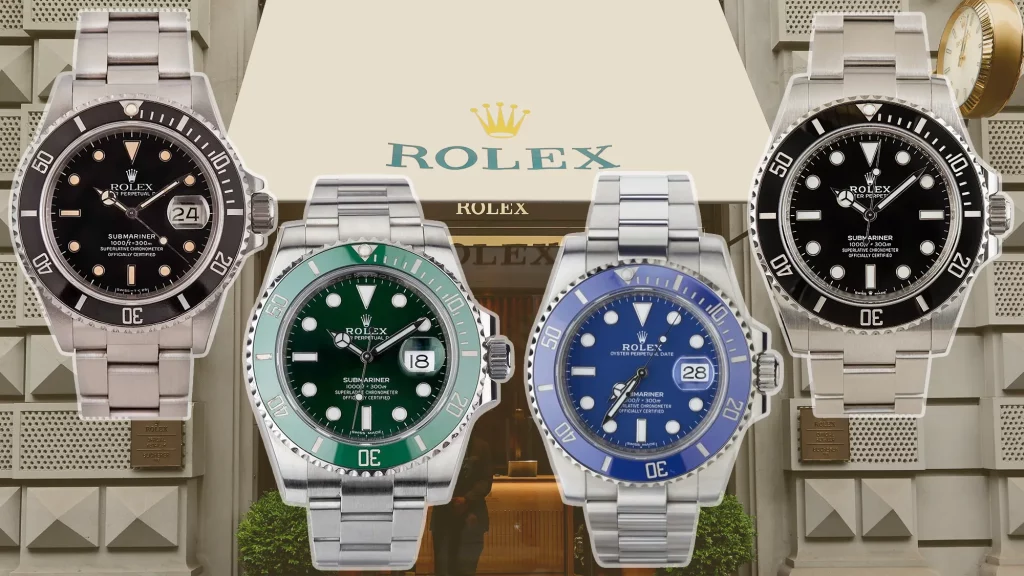
The Ethics of Counterfeit Watches
The counterfeit market has long been a controversial topic in the watch industry. While the sale and purchase of fake watches are illegal in many places, the demand for replicas continues to grow, driven by the desire to own luxury items at a fraction of the price. Counterfeit watches are often seen as inferior in quality and craftsmanship, and yet, as this story demonstrates, they can still carry significant cultural weight.
For some, wearing a fake Rolex is a form of status signaling, a way to project an image of wealth and success without spending thousands of dollars. While this may be seen as a harmless desire to appear affluent, the ethical implications of owning and wearing counterfeit items are more complicated. The counterfeiting industry is tied to various illegal and unethical practices, from the exploitation of workers to the loss of intellectual property rights for luxury brands.
Yet, as this incident shows, the perceived value of a counterfeit Rolex may not be as insignificant as some would think. The watch didn’t need to be real to save a life; it only needed to appear authentic in the eyes of those around it. This raises an important point about our attachment to material objects: often, the meaning we assign to an item is based more on social perception than on the item’s inherent value.
The Cultural Significance of Watches in Society
Watches have long been associated with power, success, and status. From their early use as tools for navigation and timekeeping to their current place as symbols of luxury and achievement, watches have always been more than just functional accessories. They are often seen as representations of personal identity and success.
In modern culture, owning a luxury watch is frequently viewed as a rite of passage for those who have achieved a certain level of financial success. The Rolex brand, in particular, is synonymous with achievement, with the iconic timepieces often worn by business leaders, celebrities, and influential figures. This cultural association imbues Rolex watches with a sense of power and prestige, whether real or imagined.
However, the story of the fake Rolex challenges this narrative by showing that perception, rather than authenticity, can sometimes be the driving force behind cultural significance. The watch in question may have been a replica, but it still carried the same weight in the eyes of those who saw it, ultimately playing a key role in the successful rescue of Thompson.
The Aftermath: A New Perspective on Authenticity
After the incident, Thompson reflected on the events and came to a surprising conclusion. Despite the fact that his Rolex had been a fake, he realized that it had still played an undeniable role in saving his life. The perception of the watch had influenced the actions of the hiker who came to his aid, and in a strange way, the fake Rolex had lived up to its intended purpose—creating an image of wealth and importance that prompted a life-saving response.
Thompson’s story offers a new perspective on the debate between authenticity and perception in watch culture. It forces us to question whether the value of a luxury watch lies solely in its craftsmanship and authenticity, or if the perception of owning such an item carries a weight that can transcend its material value.
While Thompson ultimately replaced his counterfeit Rolex with the genuine article, he now sees both the value and the limitations of such items. The incident also led him to consider how the power of perception can shape our interactions and decision-making, especially in critical moments.
Conclusion: The Power of Perception in Luxury Watches
The remarkable story of how a fake Rolex saved a man’s life is a testament to the enduring psychological and cultural power of watches. While authenticity is undoubtedly important to many watch enthusiasts and collectors, it’s clear that perception—how others view an item—can be just as significant in certain situations. Whether a watch is real or fake, its symbolic value can influence behavior and decisions, sometimes in life-altering ways.
As the story of Daniel Thompson shows, a luxury item’s perceived value can sometimes outweigh its actual worth, and in the case of this fake Rolex, it was enough to inspire a life-saving response. In the world of watches, authenticity may reign supreme, but perception, as this tale proves, can be just as powerful.



